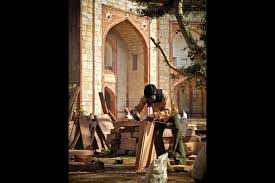To promote, protect and preserve the cultural heritage of the Himalayas, financial assistance is provided to institutions and voluntary organizations with reference to the scope and content of individual projects and on the recommendation of UGC, the State Government or Union Territory concerned.
The quantum of financial assistance would normally not exceed Rs. 5 lakhs.
Trust should be registered as a Society under the Society Registration Act or as a trust under the law In force and shall have been functioning for a period of three years. click for trust registration.
The voluntary institutions should have the capacity to undertake and promote research work and it should have all the facilities to implement the scheme. Its work should be certified as satisfactory by the respective state government and it should not be run for the profit of the individual or group of individuals. connect with our ngo consultancy for more detailed information.
It should have a well defined Constitution / Institutions like Universities for eligibility should be introduced in their curricula or research course subjects relating to preservation of Himalayan art and culture.
Financial Aid for Promotion of Regional and Local Museums To promote local and regional arts and artifacts and setting up of museums to highlight the culture of particular area support is provided to voluntary organizations over a period of two years.
An accurate analysis of the subject of conservation and awareness of cultural-archaeological heritage requires going beyond the recurrent idea of the systematic external destruction and placing the discussion deeper into the Palestinian courtyard. Palestinians have more than 15 years of work in conservation – a good ground to conduct this discussion over and an inherent call to bear more responsibility in determining priorities and agendas in conservation. Heritage usually defines a hegemonic, highly institutionalized project of commemoration that is productive of collective identities—most often in the function of nation-building. In the critical literature on the subject, it is frequently opposed to the counter memories it oppresses.
Heritage is the shared past of the nation, which manifests itself in a monument to fallen soldiers or a site of national memory once visited as a child. Heritage also refers to the apparatus of institutions and regulations set in place as part of the state’s bureaucracy to administer its significant, distinctive past and the national cultural objects deemed worthy of preservation. In contrast to Smith, I look at how heritage participates in the government of territories and populations under conditions of multi-sited, graduated authority.




